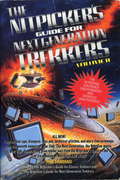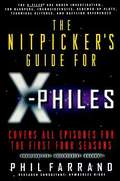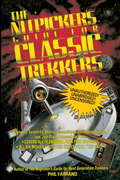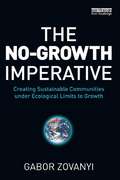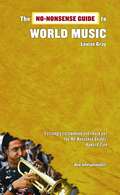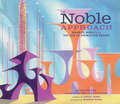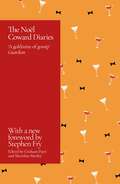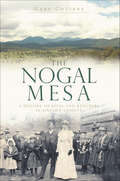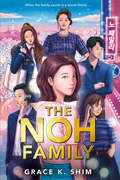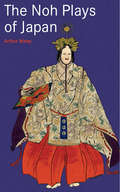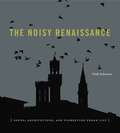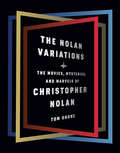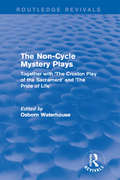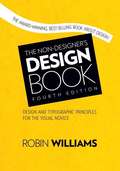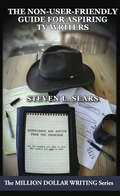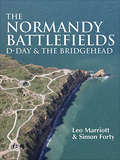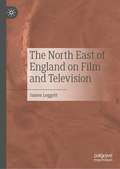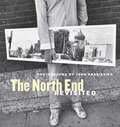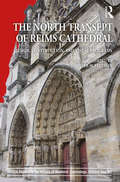- Table View
- List View
The Nitpicker's Guide for Next Generation Trekkers Volume 2
by Phil FarrandA follow-up to the first, best-selling Nitpicker's guide ferrets out the plot inconsistencies, scientific inaccuracies, and other foul-ups in the seventh, final season of the TV series, Star Trek: The Next Generation.
The Nitpicker's Guide for X-Philes
by Phil FarrandThe truth is, the nits are out there. . . . What's weird about Samantha T. Mulder's birthday? (She has two of them: January 22 and November 21. ) What's amazing about Mulder's cell phone? (It operates inside a metal boxcar, buried in a canyon, out in the deserts of New Mexico: anywhere!) Scully and Mulder, you have reason to be paranoid. Armed with keen detective sense, attention to detail, and a VCR, author Phil Farrand has done some forensic work of his ownííand dissected every technical foul-up, plot oversight, and alien intrusion on theX-Files(r). Paranormal he's not, but he'd like to know why T. A. Berube has a six-digit zip code or how the VCRs at the 2400 Court motel in Braddock Heights, Maryland, can play a tape after it's been ejected. Nitpicking? You bet. So join his conspiracy to have hours of mental stimulation and fun with: Equipment flubs Changed premises Plot oversights Fun facts Trivia questions Reviews of every show for all four seasons And more
The Nitpicker’s Guide for Classic Trekkers
by Phil FarrandSix feature films, the wildly successful television spin-off Star Trek: The Next Generation, endless reruns, videotapes, conventions, a line of best-selling novels, and William Shatner's New York Times best-seller Star Trek Memories have kept the Star Trek spirit alive and well, even 25 years after its cancellation. Now this must-have book for all Trekkers -- which covers every episode of the original series, the pilot, and all six movies -- reveals all the bloopers, continuity errors, plot oversights, equipment malfunctions, and goof-ups that discerning, die-hard fans love to spot, but may have missed. Written especially for all those who find themselves thinking, "Hey, if the transporter is broken, why don't they just use a shuttlecraft?", this nitpicky volume includes Kirk's toupee watch; an examination of the logic of the miniskirted female crew members; number of times Kirk violated the Prime Detective and lots of trivia questions, fun facts, quizzes, and more. Live long and nitpick.
The No-Growth Imperative: Creating Sustainable Communities under Ecological Limits to Growth
by Gabor ZovanyiMore than two decades of mounting evidence confirms that the existing scale of the human enterprise has surpassed global ecological limits to growth. Based on such limits, The No-Growth Imperative discounts current efforts to maintain growth through eco-efficiency initiatives and smart-growth programs, and argues that growth is inherently unsustainable and that the true nature of the challenge confronting us now is one of replacing the current growth imperative with a no-growth imperative. Gabor Zovanyi asserts that anything less than stopping growth would merely slow today’s dramatic degradation and destruction of ecosystems and their critical life-support services. Zovanyi makes the case that local communities must take action to stop their unsustainable demographic, economic, and urban increases, as an essential prerequisite to the realization of sustainable states. The book presents rationales and legally defensible strategies for stopping growth in local jurisdictions, and portrays the viability of no-growth communities by outlining their likely economic, social, political, and physical features. It will serve as a resource for those interested in shifting the focus of planning from growth accommodation to the creation of stable, sustainable communities. While conceding the challenges associated with transforming communities into no-growth entities, Zovanyi concludes by presenting evidence that suggests that prospects for realizing states of no growth are greater than might be assumed.
The No-Kill Garden: A Collection of Handcrafted Plants for the Blackest of Thumbs
by Nikki Van De Car Angela RioCraft lush, beautiful plants--from succulents and ferns to blooming flowers--with The No Kill Garden, a collection of more than 30 paper, felt, knit, and crocheted projects that bring the outdoors in.Many of us love plants . . . but it often feels like plants don't love us back. For those people -- the people who have purchased several "impossible to kill" houseplants, only to find them dead mere weeks later -- there is The No Kill Garden, a charming collection of plants to craft and share.The handcrafted plants offered in this beguiling volume provide the sense of being surrounded by green, luscious plant life, without having to worry about that pesky watering. The No Kill Garden offers a wide variety of plants, from mushrooms and flowers to vines and terrariums, and a broad range of easy-to-follow crafts, including paper, felt, needle-felt, knit, and crochet. The more than 30 projects in this book are not just random flowers or leaves, either -- each of the crafted plants is inspired by a specific variety and is accompanied by a lively description of its main characters. Each of the plants is structured for a beginner, so that anyone with an interest in crafting can make them, and is paired with beautiful images of the finished project to delight and inspire readers.
The No-Nonsense Guide to World Music
by Louise Gray"World music" is an awkward phrase. Used to describe the hugely multifaceted nature of a range of typically non-English-language popular music from the world over, it's a tag that throws up as many problems as it does solutions.Louise Gray's The No-Nonsense Guide to World Music attempts to go behind the phrase to explore the reasons for the contemporary interest in world music, who listens to it, and why. Through chapters that focus on specific areas of music, such as rembetika, fado, trance music, and new folk, Gray explores the genres that have emerged from marginalized communities, music in conflict zones, and music as escapism.In this unique guide, which combines the seduction of sound with politics and social issues, the author makes the case for music as a powerful tool able to bring individuals together.Louise Gray is a writer and editor whose work on music and performing arts has appeared in the New Internationalist, The Wire, The Independent on Sunday, the Guardian, and Art Review. She co-edited Sound and the City (British Council, 2007), a book exploring the changing soundworld of China.
The Noble Approach: Maurice Noble and the Zen of Animation Design
by Tod PolsonThis extraordinary volume examines the life and animation philosophy of Maurice Noble, the noted American animation background artist and layout designer whose contributions to the industry span more than 60 years and include such cartoon classics as Duck Dodgers in the 24 ½th Century, What's Opera, Doc?, and The Road Runner Show. Revered throughout the animation world, his work serves as a foundation and reference point for the current generation of animators, story artists, and designers. Written by Noble's longtime friend and colleague Tod Polson and based on the draft manuscript Noble worked on in the years before his death, this illuminating book passes on his approach to animation design from concept to final frame, illustrated with sketches and stunning original artwork spanning the full breadth of his career.
The Noel Coward Diaries: With a Foreword by Stephen Fry
by Sheridan Morley Graham Payn'A gold mine of gossip with a cast of thousands' GUARDIANThe unexpurgated diaries of one of the greatest, most talented, and wittily flamboyant characters of the 20th century - with a new introduction by Stephen Fry'Compulsive reading' SUNDAY TIMES'19th February 1956. A A Milne has died. Lord Beaverbrook has not ... Larry is going to make a movie of The Sleeping Prince with Marilyn Monroe, which might conceivably drive him round the bend''28th February 1960 Princess Margaret has announced her engagement to Tony Armstrong-Jones ... He looks quite pretty, but whether or not the marriage is entirely suitable remains to be seen.'Noel Coward was a renowned actor, dramatist, director - and star. His incredible zest, versatility and unrivalled wit are revealed in these diaries, with a cast of characters ranging from The Beatles to the Queen, Churchill to Marilyn Monroe.Touching, funny and revealing, THE NOEL COWARD DIARIES is a superb account of one of the greatest entertainers of all time.
The Noel Coward Diaries: With a Foreword by Stephen Fry
by Sheridan Morley Graham Payn'A gold mine of gossip with a cast of thousands' GUARDIANThe unexpurgated diaries of one of the greatest, most talented, and wittily flamboyant characters of the 20th century - with a new introduction by Stephen Fry'Compulsive reading' SUNDAY TIMES'19th February 1956. A A Milne has died. Lord Beaverbrook has not ... Larry is going to make a movie of The Sleeping Prince with Marilyn Monroe, which might conceivably drive him round the bend''28th February 1960 Princess Margaret has announced her engagement to Tony Armstrong-Jones ... He looks quite pretty, but whether or not the marriage is entirely suitable remains to be seen.'Noel Coward was a renowned actor, dramatist, director - and star. His incredible zest, versatility and unrivalled wit are revealed in these diaries, with a cast of characters ranging from The Beatles to the Queen, Churchill to Marilyn Monroe.Touching, funny and revealing, THE NOEL COWARD DIARIES is a superb account of one of the greatest entertainers of all time.
The Nogal Mesa: A History of Kivas and Ranchers in Lincoln County (Landmarks)
by Gary CozzensThis book was a finalist for the New Mexico Book Co-Op History Book of the Year. Most people think of Billy the Kid and the Lincoln County War when Lincoln County, New Mexico is mentioned. "Yet, the county has a rich history besides that chapter of lawlessness and violence. In writing this book I wanted to tell the story of the miners and forest rangers and the Civilian Conservation Corps and early settlers."The Jornada Mogollon culture was here over a thousand years ago but had left before Christopher Columbus arrived in the new world. "They have left pieces of their lifestyle in the form of pueblos and pottery. "A railroad was built in the basin below the Mesa, but the water there was full of alkaline and chemicals. "The Mesa had pristine mountain water and an engineering miracle was built in the form of a pipeline to get the water from the Mesa to the railroad. "A western religious revival in the form of the Ranchman's Camp continues this summer for the 71st year.
The Noh Family
by Grace K. ShimThis sparkling K-drama inspired debut novel introduces irrepressibly charming teen Chloe Chang, who is reunited with her deceased father's estranged family via a DNA test, and is soon whisked off to Seoul to join them...When her friends gift her a 23-and-Me test as a gag, high school senior Chloe Chang doesn&’t think much of trying it out. She doesn&’t believe anything will come of it—she&’s an only child, her mother is an orphan, and her father died in Seoul before she was even born, and before her mother moved to Oklahoma. It&’s been just Chloe and her mom her whole life. But the DNA test reveals something Chloe never expected—she&’s got a whole extended family from her father&’s side half a world away in Korea. Turns out her father's family are amongst the richest families in Seoul and want to meet Chloe. So, despite her mother's reservations, Chloe travels to Seoul and is whisked into the lap of luxury . . . but something feels wrong. Soon Chloe will discover the reason why her mother never told her about her dad&’s family, and why the Nohs wanted her in Seoul in the first place. Could joining the Noh family be worse than having no family at all?
The Noh Plays of Japan
by Arthur WaleyFirst published in 1921, The Noh Plays of Japan has been justly famous for more than three-quarters of a century and established the Noh play for the Western reader as beautiful literature. It contains translations of nineteen plays and summaries of sixteen more.
The Noisy Paint Box: The Colors and Sounds of Kandinsky's Abstract Art
by Mary Grandpre Barb RosenstockVasya Kandinsky was a proper little boy: he studied math and history, he practiced the piano, he sat up straight and was perfectly polite. And when his family sent him to art classes, they expected him to paint pretty houses and flowers--like a proper artist. But as Vasya opened his paint box and began mixing the reds, the yellows, the blues, he heard a strange sound--the swirling colors trilled like an orchestra tuning up for a symphony! And as he grew older, he continued to hear brilliant colors singing and see vibrant sounds dancing. But was Vasya brave enough to put aside his proper still lifes and portraits and paint . . . music? In this exuberant celebration of creativity, Barb Rosenstock and Mary GrandPré tell the fascinating story of Vasily Kandinsky, one of the very first painters of abstract art. Throughout his life, Kandinsky experienced colors as sounds, and sounds as colors--and bold, groundbreaking works burst forth from his noisy paint box. Backmatter includes four paintings by Kandinsky, an author's note, sources, links to websites on synesthesia and abstract art.From the Hardcover edition.
The Noisy Renaissance: Sound, Architecture, and Florentine Urban Life
by Niall AtkinsonFrom the strictly regimented church bells to the freewheeling chatter of civic life, Renaissance Florence was a city built not just of stone but of sound as well. An evocative alternative to the dominant visual understanding of urban spaces, The Noisy Renaissance examines the premodern city as an acoustic phenomenon in which citizens used sound to navigate space and society.Analyzing a range of documentary and literary evidence, art and architectural historian Niall Atkinson creates an “acoustic topography” of Florence. The dissemination of official messages, the rhythm of prayer, and the murmur of rumor and gossip combined to form a soundscape that became a foundation in the creation and maintenance of the urban community just as much as the city’s physical buildings. Sound in this space triggered a wide variety of social behaviors and spatial relations: hierarchical, personal, communal, political, domestic, sexual, spiritual, and religious.By exploring these rarely studied soundscapes, Atkinson shows Florence to be both an exceptional and an exemplary case study of urban conditions in the early modern period.
The Noisy Renaissance: Sound, Architecture, and Florentine Urban Life
by Niall AtkinsonFrom the strictly regimented church bells to the freewheeling chatter of civic life, Renaissance Florence was a city built not just of stone but of sound as well. An evocative alternative to the dominant visual understanding of urban spaces, The Noisy Renaissance examines the premodern city as an acoustic phenomenon in which citizens used sound to navigate space and society.Analyzing a range of documentary and literary evidence, art and architectural historian Niall Atkinson creates an “acoustic topography” of Florence. The dissemination of official messages, the rhythm of prayer, and the murmur of rumor and gossip combined to form a soundscape that became a foundation in the creation and maintenance of the urban community just as much as the city’s physical buildings. Sound in this space triggered a wide variety of social behaviors and spatial relations: hierarchical, personal, communal, political, domestic, sexual, spiritual, and religious.By exploring these rarely studied soundscapes, Atkinson shows Florence to be both an exceptional and an exemplary case study of urban conditions in the early modern period.
The Nolan Variations: The Movies, Mysteries, and Marvels of Christopher Nolan
by Tom ShoneAn in-depth look at, and written in collaboration with, the man considered to be the most profound, and commercially successful director at work today--his work, including his latest blockbuster, the action-thriller/spy-fi Tenet ("Big, brashly beautiful, grandiosely enjoyable"--Variety); his influences, his vision, his enigmatic childhood past, and much more. With Nolan's never-before-seen photographs, storyboards, and scene sketches. "The Nolan Variations is that rare thing, a superb book about a living filmmaker. Erudite, complex, labyrinthine and mind-expanding--it's as close as you're ever going to get to the Escher drawing that is Christopher Nolan's remarkable brain."--Sam Mendes"Fabulous: intelligent, illuminating, rigorous, and highly readable. The very model of what a filmmaking study should be. Essential reading for anyone who cares about Nolan or about film for that matter."--Neal Gabler, author of An Empire of Their Own: How the Jews Invented Hollywood and Walt Disney, The BiographyA rare, intimate portrait of Christopher Nolan with the full cooperation of Nolan himself who opened up more fully than ever before in his talks with Tom Shone. In chapters structured by themes and motifs ("Time"; "Chaos"), Shone writes of Nolan's thoughts on movies, on plots; on time, identity, perception, chaos, daydreams.Here is Nolan on the evolution of his pictures, and the writers, artists, directors, and thinkers who have inspired and informed his films.To write the book, Tom Shone, who has known Nolan for more than two decades and who spent months with the director, was given unprecedented access to Nolan's notes, scripts, storyboards, and artwork.In this riveting portrait of an artist, Shone deftly navigates Nolan's themes, influences, and working methods (both in writing and directing). Here is his trans-Atlantic childhood ("It makes you feel very differently about the concept of 'home'") . . . how he dreamed up the plot of Inception lying awake one night in his dorm ("I prized the imaginative space of listening to music in the dark, thinking about things, imagining things, films, stories") . . . his color-blindness and its effect on Memento ("People are fascinated by other people's perception of the world and the way in which it differs") . . . his obsession with puzzles and optical illusions . . . and much, much more.
The Non-Cycle Mystery Plays: Together with 'The Croxton Play of the Sacrament' and 'The Pride of Life' (Routledge Revivals)
by Osborn WaterhouseBetween the beginning of the tenth and the end of the sixteenth centuries, in all parts of Great Britain from Aberdeen to Cornwall, performances of liturgical and mystery plays are on record. This book, first published in 1909, is a collection of early-English religious plays with a detailed introduction written by the editor Osborn Waterhouse. The Non-Cycle Mystery Plays will be of interest to students of drama, performance and theatre studies.
The Non-Designer's Design Book: Design And Typographic Priciples For The Visual Novice (Fourth Edition)
by Robin WilliamsFor nearly 20 years, designers and non-designers alike have been introduced to the fundamental principles of great design by author Robin Williams. Through her straightforward and light-hearted style, Robin has taught hundreds of thousands of people how to make their designs look professional using four surprisingly simple principles. Now in its fourth edition, The Non-Designer’s Design Book offers even more practical design advice, including a new chapter on the fundamentals of typography, more quizzes and exercises to train your Designer Eye, updated projects for you to try, and new visual and typographic examples to inspire your creativity.
The Non-User-Friendly Guide For Aspiring TV Writers: Experience and Advice From the Trenches (Million Dollar Writing Series) (Million Dollar Writing Series)
by Steven L. SearsA veteran writer presents his personal account of being in the trenches of the television industry, offering advice and tactics for aspiring scriptwriters. Steven L. Sears has had a successful career in film and television encompassing over thirty years of involvement at all levels. From his beginnings as a staff writer on the hit NBC show The A-Team, to Co-Executive Producer on the hit series Xena-Warrior Princess for MCA/Universal, creator and Executive Producer of Sheena for Sony/TriStar Television, and many pilot and development deals with the major studios and production companies, he has amassed a huge amount of experience and knowledge about the inner workings of the entertainment industry. In The Non-User-Friendly Guide for Aspiring Television Writers, he shares that experience and gives advice for those considering a career in television writing. Instead of the traditional academic and sterile approach, Steven answers questions from a personal, first person perspective. The questions have been culled from the real world, people seeking out his advice and looking for the experience that most books don&’t have. Some of what he writes about are hard and difficult facts to accept about the business. Other times it&’s his opinion based on his vast experience. But all of it is unsweetened and direct. Even if you don&’t like his answers, he will certainly make you think hard about your approach and choices when pursuing a career in an extremely difficult industry. As a result, you will be better prepared to achieve the success that he has had. Accessible, personable, and relaxed, &“It&’s like having lunch with Steven and asking him questions about the business. Without having to watch him eat.&”
The Normandy Battlefields: D-Day and the Bridgehead (Then And Now Ser.)
by Simon Forty Leo MarriottExperience the battlefields of D-Day in this beautiful book combining historical images, full-color aerial photography, and informative text. The D-Day invasion of Nazi-occupied Normandy was the most dramatic turning point of World War II. With a combination of historic and contemporary photography, along with maps and other illustrations, The Normandy Battlefields takes readers &“on-site&” to the sacred battlegrounds. The armada that attacked from Britain left behind many signs of their passage. The Normandy Battlefields details what can be seen on the ground today using a mixture of media to provide a complete overview of the campaign. Maps old and new highlight what has survived and what hasn&’t; then-and-now photography allows fascinating comparisons with the images taken at the time, and computer artwork provides graphic details of things that can&’t be seen today. The book describes the area from Cherbourg to Le Havre by way of the key D-Day locations, providing a handbook for the visitor and an overview for the armchair traveler. It covers the forces from both sides and the memorials to those young men who fought so many years ago.
The Normans in Sicily: Being A Sequel To “An Architectural Tour in Normandy”
by Henry Gally KnightAn historical account of the Normans, paired with a travelogue based on an architectural tour of Sicily to study the influence of the Normans, by a British M.P., traveler, and writer who served as High Sheriff of Nottinghamshire in 1814-15.Knight was the only son of Henry Gally (afterwards Gally Knight), barrister, of Langold, and was educated at Eton and Trinity Hall, Cambridge. He succeeded in 1808 to estates at Firbeck and Langold Park which his father had inherited in 1804 from his brother John Gally Knight.Knight was appointed High Sheriff of Nottinghamshire for 1814–1815. He also held the office of deputy-lieutenant of Nottinghamshire. He was a Member of Parliament for the constituencies Aldborough (12 Augst 1814-April 1815), Malton (1831–1832; 31 March 1835-9 February 1846), North Nottinghamshire (1835 and in 1837). In parliament he was a fluent but infrequent speaker. He was also a member of the commission for the advancement of the fine arts.Knight owned Firbeck Hall in Rotherham. Sir Walter Scott's novel Ivanhoe is set nearby, and Knight may have been Scott's source of local information when he was writing the book. He was admitted a Fellow of the Royal Society on 20 May 1841.
The North East of England on Film and Television
by James LeggottThis book analyses the representation of North-East England in film and television. It is a response to the way a number of important British films and programmes—for example, Get Carter (1971), Whatever Happened to the Likely Lads (1973-74), Our Friends in the North (1996) and Billy Elliot (2000)—have used this particular setting to explore questions of class, identity and history. It argues for the significance and coherence of a North-East corpus of film and television through a series of case studies relating to specific eras or types of representation. These include regional writers working for television in the 1970s, the achievements of the workshop movement in the 1980s and works produced within the genres of documentary, crime drama, comedy, period drama and reality television. The book discusses how the communities and landscapes of the region have been used to explore processes of cultural change, and legacies of de-industrialisation.
The North East of England on Film and Television
by James LeggottThis book analyses the representation of North-East England in film and television. It is a response to the way a number of important British films and programmes—for example, Get Carter (1971), Whatever Happened to the Likely Lads (1973-74), Our Friends in the North (1996) and Billy Elliot (2000)—have used this particular setting to explore questions of class, identity and history. It argues for the significance and coherence of a North-East corpus of film and television through a series of case studies relating to specific eras or types of representation. These include regional writers working for television in the 1970s, the achievements of the workshop movement in the 1980s and works produced within the genres of documentary, crime drama, comedy, period drama and reality television. The book discusses how the communities and landscapes of the region have been used to explore processes of cultural change, and legacies of de-industrialisation.
The North End Revisited: Photographs by John Paskievich
by Stephen Osborne George Melnyk John Paskievich Alison GillmorCities and the people who live in them are enduring subjects of photography. Winnipeg’s North End is one of North America’s iconic neighbourhoods, a place where the city’s unique character and politics have been forged. First built when Winnipeg was the “Chicago of the North,” the North End is the great Canadian melting pot, where Indigenous peoples and Old World immigrants cross the boundaries of ethnicity, class, and culture. Like New York’s Lower East Side, the North End is also the place that helped to forge Winnipeg’s political identity of resistance and revolt. Award-winning filmmaker John Paskievich grew up in Winnipeg’s North End, and for the last forty years he has photographed its people and captured its spirit. Paskievich’s films, many made for the National Film Board of Canada, follow the lives of different outsiders, from Slovakian Roma to stutterers. The North End Revisited brings together many of the photographs from Paskievich’s now-classic book The North End (2007) with eighty additional images to present a deep and poignant picture of a special community. Texts by art critics Stephen Osborne and Alison Gillmor and film scholar George Melnyk explore the different aspects of Paskievich’s work and add context from Winnipeg’s history and culture.
The North Transept of Reims Cathedral: Design, Construction, and Visual Programs (AVISTA Studies in the History of Medieval Technology, Science and Art #11)
by Jennifer M. FeltmanThis interdisciplinary volume in the AVISTA series is the first book to focus solely on the north transept of Reims Cathedral, the portion of the gothic building that served as the canons' primary entrance to the cathedral from their adjoining cloister in the thirteenth century. Despite the importance of its sculpture and stained glass, as well as its ritual use by the canons, the north transept remains one of the least understood portions of the cathedral--in part because its sequence of construction is so complex, even improvised. Until recently, important archaeological evidence of the transept's substructures was unavailable. This is, however, no longer the case. <P><P> The current volume presents this new subterranean evidence alongside careful studies of the stones above ground, analysis of the geometry used in the transept's design, iconographic and stylistic studies of its sculpture and glass, and extant medieval documents, which record events bearing upon its construction. Essays by international specialists of the cathedral's archaeology, architecture, sculpture, and stained glass address issues of the north transept's evolving design and visual programs, thereby significantly clarifying and revising the building's chronology. Essays also consider the meaning of its visual programs in light of architectural adaptation and contemporary socio-historical events--whether royal coronations or the infamous revolts of the local burghers. In addition to presenting a readily accessible state of the research on the north transept, the volume also provides a model for interdisciplinary and international collaboration in the study of medieval buildings.
